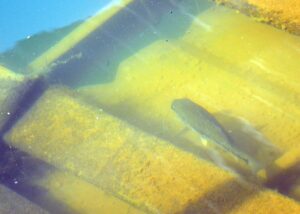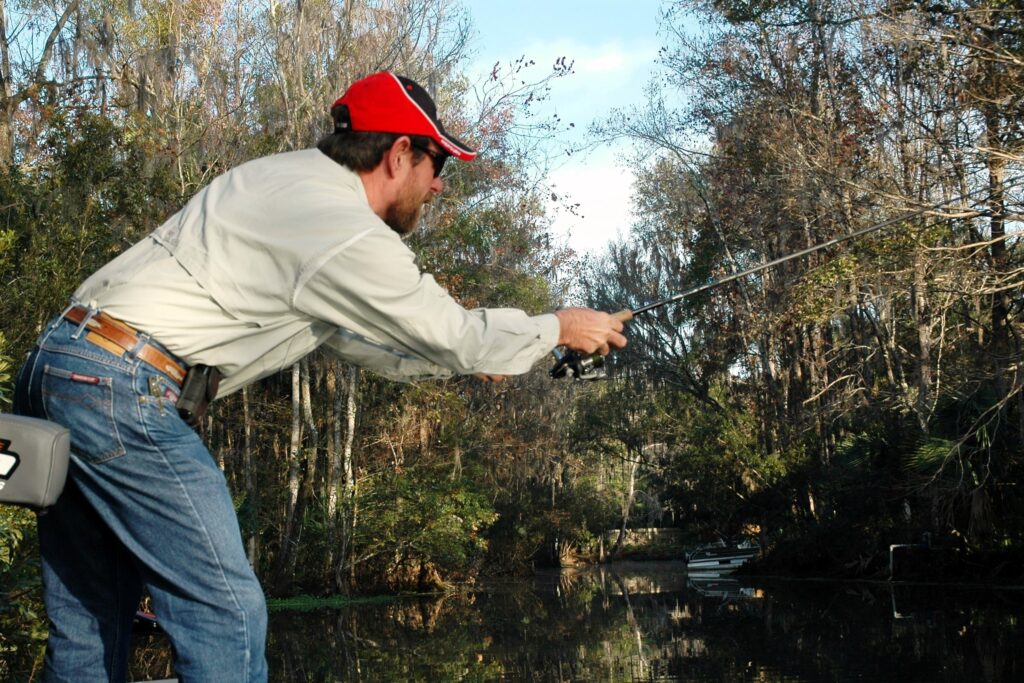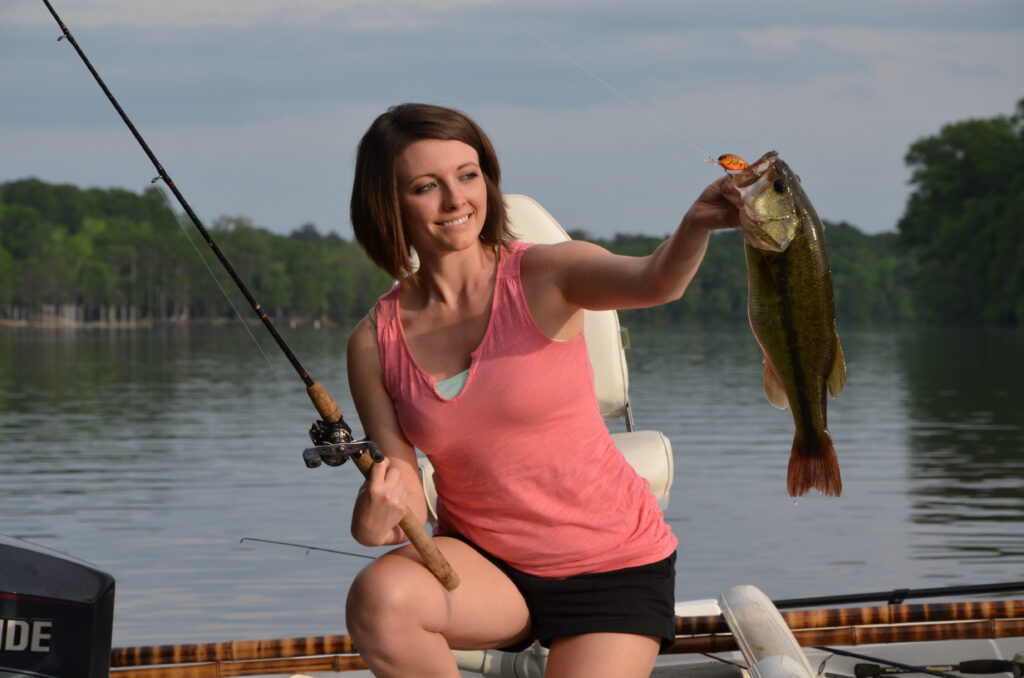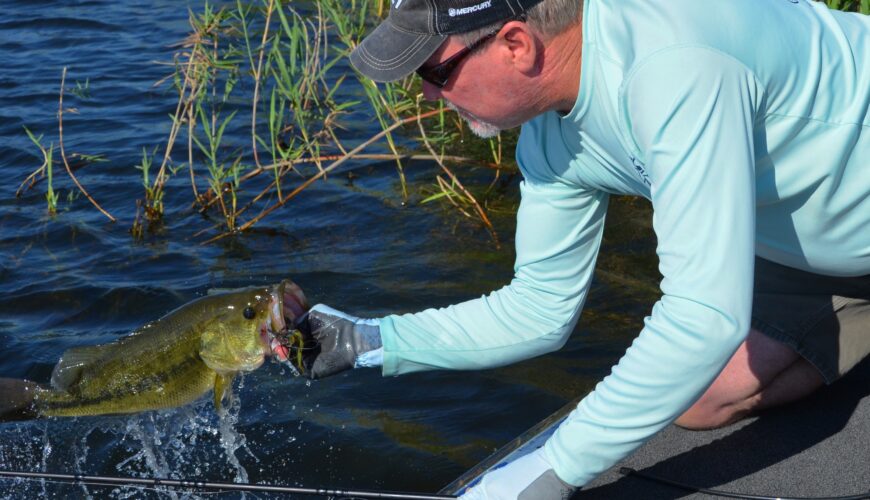Tactics
National Deer Association’s 5 Top Tips for Late-Season Deer Hunting
December 17, 2025 •iSportsman Staff
April 14, 2025
When water warms sufficiently in the spring, male bass scour out saucer-shaped depressions on the bottom. Females typically arrive about two to three weeks later. After spawning, females leave the males to guard the eggs and fry.
For many people, spawning season means sight-fishing season. Anglers frequently spot and catch giant largemouth on shallow beds. Some people throw at one huge bass for several hours before it hits a bait or leaves.
Bass commonly make beds on shallow flats or humps with hard gravel or sandy bottoms close to deeper water. Sometimes, they build nests on roots or other hard objects. When spawning in shallow water, bass become vulnerable to predators, especially birds. They like brush, thick vegetation, fallen trees, docks or other cover that offers overhead protection.

Bass might spawn on any hard surface they can locate. Here, a bass found an old boatlift to make a spawning bed. John N. Felsher Photo
“Bass on the beds are very conscious of movement above the surface because they must watch for eagles, ospreys, pelicans, cormorants and other birds looking to dive on them,” explained Shaw Grigsby, a professional bass angler and longtime television show host from Gainesville, Fla. “If a human shadow falls on a fish, it might spook. If it sees an arm raised to make a cast, it might spook. When fishing a bed, I bend my knees and crouch. With a spinning rod, I make sidearm skip-casts low over the water.”
Before anglers can catch bedding bucketmouths, they must find them. Work the trolling motor at a moderate constant speed when searching the shallows for beds. Anglers might see a whole fish or perhaps just a shadow, flashing tail or fin, perhaps other movement.
“Sight fishing for bass is almost like hunting and stalking,” Grigsby confirmed. “The challenge is finding the fish. Try to put the sun behind one shoulder and look for fish with polarized sunglasses. I want to see the bass before they see me. Once we find them, we can often catch them.”

2009-01-096 – Shaw Grigsby, a professional bass angler from Gainesville, Fla., tries to cast under cover to fish a bass bed on the Withlacoochee River near Dunnellon, Fla. John N. Felsher Photo
Grigsby lives in Florida where abundant springs bubble up, producing some of the clearest water in the world. Clear water makes spotting bass much easier than in murky waters, but it also presents challenges. If a person can see a bass, the bass can see that person.
“Clear water is probably the hardest condition to fish,” advised Kevin VanDam, a four-time Bassmaster Classic champion from Kalamazoo, Mich. “In Michigan, we have some lakes where we can see the bottom in 25 feet of water.”
After finding a bed, especially in clear water, don’t get too close. If people spook the fish, it leaves the nest. Usually, the bass returns to the bed after the person departs. Some people mark the bed with a non-descript stick or other natural object that looks like it belongs there and return to fish that spot later.

Becky Smith lands a bass that hit a crankbait in the Mobile-Tensaw Delta near Mobile, Ala. Bluegills and crawfish regularly raid bass nests so crankbaits that resemble these creatures can provoke violent reaction strikes from largemouth in the spring. John N. Felsher Photo
Approach the bed with stealth. Keep noise and movements to a minimum. Use light fluorocarbon line, usually six- to eight-pound test. In thicker cover or murkier water, use 10- to 12-pound test. Make the longest casts possible. Toss a lure toward the marker, but well beyond the nest. Drag the bait into the bed. Leave it there motionless for a while. Then, occasionally shake the rod. Any little subtle tantalizing vibrations could provoke a strike.
“It’s a very short window of opportunity to present a bait before the fish sees the person,” Grigsby said. “Landing right on top of it might spook the bass.”
While on the beds, male bass eat very little, but they vigorously defend their nests against many predators that want to eat the eggs and fry, perhaps the adults. They attack anything that poses a potential threat to the nest and periodically remove debris with their mouths. Bedding bass typically won’t chase baits far from the nest, so throw slow, subtle offerings.

Crankbaits can provoke vicious raction strikes from bass in the spring. Bluegills and crawfish regularly raid bass nests so crankbaits that resemble these creatures can provoke violent reaction strikes from largemouth in the spring. John N. Felsher Photo
For tempting bedding bass, many temptations could provoke strikes, but soft plastics that look like natural prey, such as lizards, jigs with craw trailers, stickbaits and finesse worms probably work the best because aquatic salamanders and crawfish rank among the worst nest raiders. Bass frequently kill them to protect their eggs even when not actively feeding.
“In clear water, I use smaller lures that look like real forage in natural colors,” VanDam recommended. “I use whatever imitates the dominant forage in that water at that time. If bass feed on crawfish, I’ll use crawfish imitating baits. Work them slowly. Give bass some time to examine the baits. A tube is one of my favorite lures for clear water. I also like to use a finesse worm or a small jig because they look so natural.”
A tube looks like a baitfish skipping across the surface. As it spirals down, it resembles an injured baitfish. Dragged along the bottom, it simulates a crawfish, making tubes deadly spring enticements.
Bluegills and other fish also eat large quantities of tiny bass. Bluegills and other panfish love eggs. Crankbaits, spinnerbaits or swimbaits in colors that mimic these fish or crawfish could provoke vicious reactive strikes from bass during the spawning season.
After catching a bass on the bed, handle it gently and release it quickly, especially a big female laden with roe. One female produces many thousands of offspring over the years. One of them could grow into the lunker of a lifetime. Also, if the male stays off the nest too long, predators move in to devour the eggs and fry.
